Hole in the Clouds
Aug 11, 2009

When the Custom House tower opened in 1913, tthe zoning code for the city of Boston limited building height to 125 feet. Because the Custom House was a federal installation, it could flat-out ignore the restriction; this tower is 496 feet high, making it the tallest building in Boston until 1964. The exterior is essentially unchanged to this day, though the interior has been drastically redesigned. It's now a time-share condo complex operated by Marriott.
Underneath the tower is a large Doric temple built in 1847, an imposintg structure that housed the warehouses and regional financial offices of the customs service. Most of the federall government's income in those days came from import levies, so in port cities such as Boston, custom houses were typically the nicest buildings in town.
In this picture, the clocks at the top of the tower have no hands. This is probably because repairs were being attempted; the wooden minute hand was so big and heavy--22 feet long--that the clock mechanism struggled to push it up from the 6 toward the 12, often failing. Until the hands were replaced with plastic a few years ago, the clocks rarely kept good time.
vintage
cityscape
Boston
Massachusetts
tower
(Image credit, Library of Congress, via Shorpy)
Jul 14, 2012
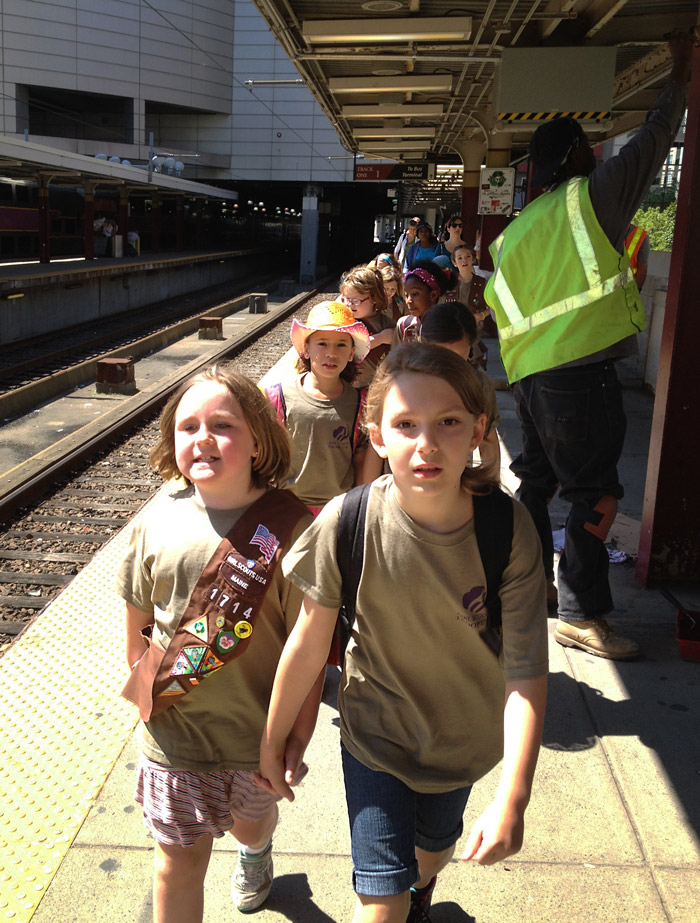 It's time for another visit with the Brownies of Troop 1714 from Portland, Maine, this time during their daylong excursion to Boston, which was funded by Girl Scout cookie sales. The Brownies rode buses and subways; visited the aquarium, the IMAX theater, and Fanueil Hall; and dined and danced at Hard Rock Cafe. Girls and leaders survived the adventure thanks to the buddy system.
It's time for another visit with the Brownies of Troop 1714 from Portland, Maine, this time during their daylong excursion to Boston, which was funded by Girl Scout cookie sales. The Brownies rode buses and subways; visited the aquarium, the IMAX theater, and Fanueil Hall; and dined and danced at Hard Rock Cafe. Girls and leaders survived the adventure thanks to the buddy system.
Emily
Boston
Massachusetts
children
Brownies
South Station
(Image credit: Susan Wiggin)
Jun 26, 2013
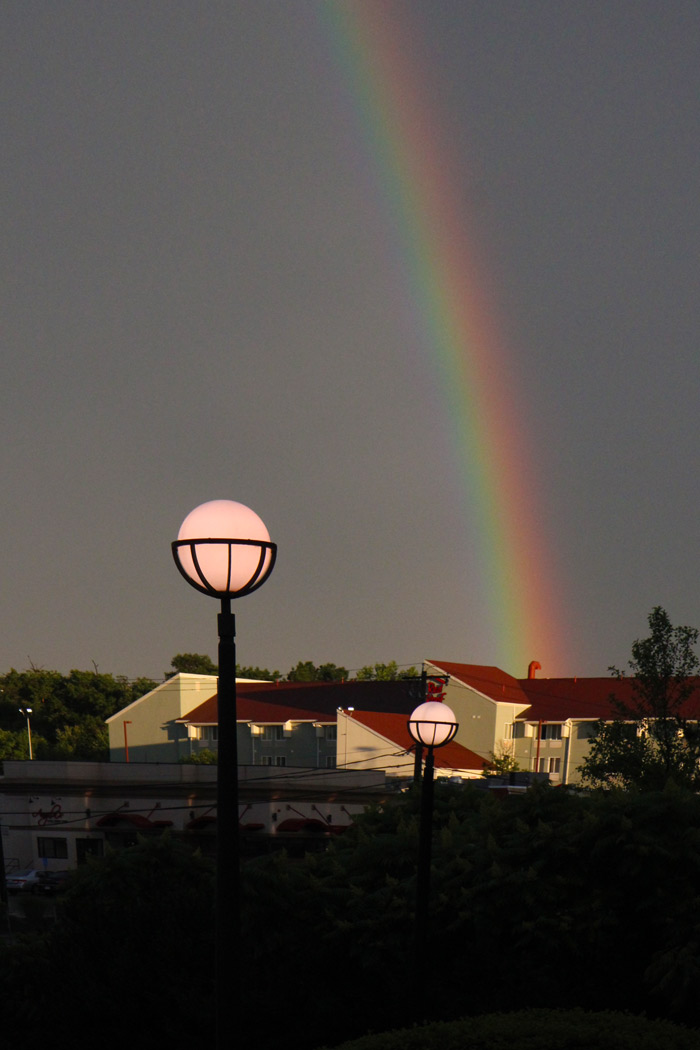 Over the red roof. At the Red Roof Inn outside Boston, near Logan Airport.
Over the red roof. At the Red Roof Inn outside Boston, near Logan Airport.
Boston
weather
sky
rainbow
Red Roof Inn
(Image credit: John Stein)
Apr 9, 2016
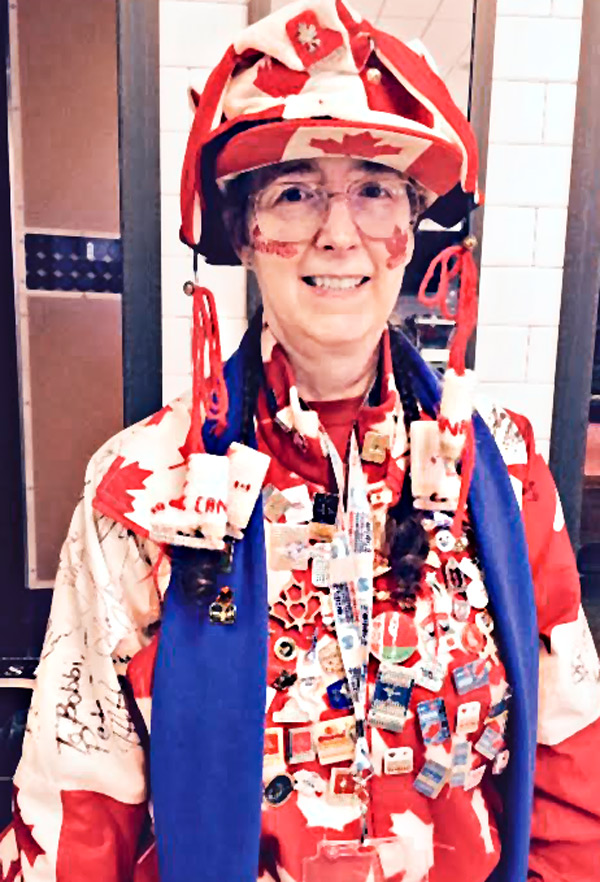
Last week saw the finals of the 2016 World Figure Skating championships, and needless to say, Bobbi Cochar was there for every minute of every program. Ever since she sat rinkside at the Canadian national championships in Ottawa in 1984, this Toronto native has never missed a major skating event, no matter where on earth the venue might be.
She cheers on her Canadians, of course, two of whom, Megan Duhamel and Eric Radford, did skate away with the gold medal last week in the pairs category. But Cochar is really there for all the skaters, making sure that every single one of them receives one of her trademark needlepoint skate ornaments as she or he goes out on the ice, along with a personal note of encouragement and thanks.
Skating looms large in Cochar's heart, especially since her diagnosis with multiple sclerosis at the age of 28. She had always been a noncompetitive dancer, and after her diagnosis, she was stunned to realize that she could still skate, even performing complicated moves and routines. "But once I was off the ice," she recalls, "I couldn't walk to save my life."
Multiple sclerosis has since cost her the hearing in one ear and the color vision in one eye, though the doctor who predicted she'd never walk again was incorrect. She skates six days a week now, four days for her work with the CanSkate program and two days on her own, just because she can.
Until recently, Cochar's mother, also a longtime ice dancer, traveled to skating events with her. The two of them collected autographs on their jackets from skaters all over the world, and took personal responsibility to make sure that anybody at all who was brave enough and hard-working enough to go out there and skate their hearts out in front of a crowd would go home with words and tokens of appreciation from skating's unrivaled superfans.
sports
Canada
Boston
Bobbi Cochar
fans
ice skating
(Image credit: Carol Fuchs)
Feb 22, 2017
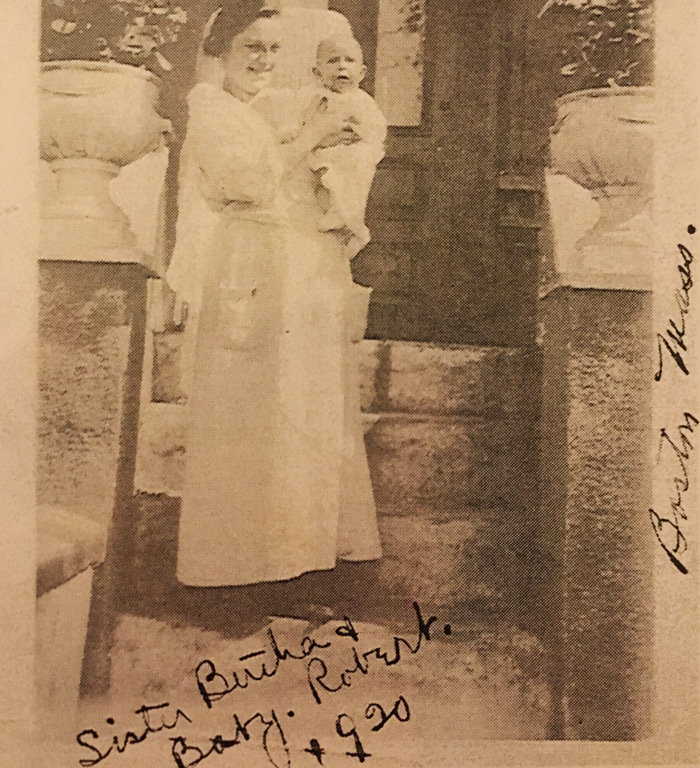 Another very old family picture: Sister Bertha is my mother's mother, my Grandma Buddy. Baby Robert is my Uncle Bob, my mother's much older brother, born in 1919.
Another very old family picture: Sister Bertha is my mother's mother, my Grandma Buddy. Baby Robert is my Uncle Bob, my mother's much older brother, born in 1919.
Like all my other grandparents, Buddy was an immigrant, brought to the United States from Russia as a small child, five years old, around the turn of the twentieth century. Her father had been a coppersmith in Russia, but I have heard two very different stories about what exactly that meant: either he fixed people's pots and pans, or he assembled a copper-tubed, um, still and made vodka to sell to soldiers in the czar's army.
Whatever, he fled Russia in a hurry after a pogrom that had led to the death of one of his children. The family had twin baby boys at the time, and as was the custom, one of the twins was sent to live with a wet nurse nearby. When the pogrom struck, the wet nurse, who was not Jewish, apparently was forced to turn over the Jewish baby in her charge, and the family had reason to believe that he was killed.
Leaving his wife and children behind, my great-grandfather left immediately for America, where he got work on the railroad, an unusual career path for an immigrant Jew. When he sent for his wife and children a few years later, they settled in a small railroad town in New Jersey or Pennsylvania. My great-grandfather became a train engineer, I'm told–but how? Isn't that the sort of job where you'd have to speak and read and write English? The family was given a pass to ride the railroad wherever they wanted to go for free; one time, they rode all the way to Portland, Oregon, where they visited a relative. Who?
When the older children in the family were approaching marriageable age, the family moved to New York City, in hopes of finding Jewish spouses. Buddy went to work in a five and dime store in Brooklyn, where she met my grandfather–but that's a story for another morning.
Boston
1920
Grandma Buddy
family history
Uncle Bob
Jan 4, 2018
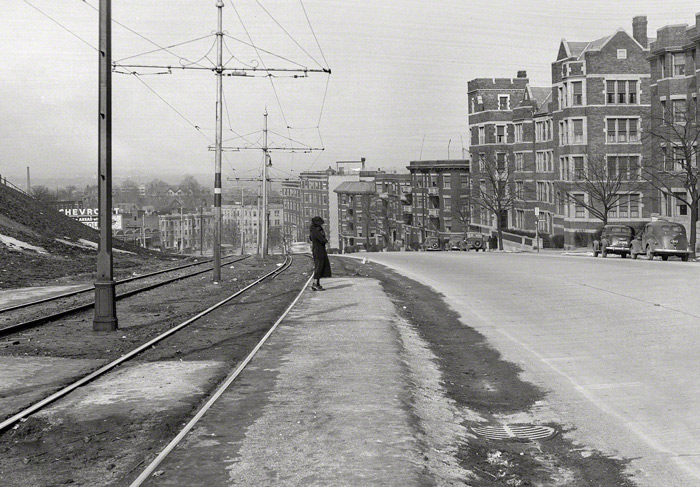 The woman in black is standing at the Summit Avenue streetcar stop, looking back across Brighton Street in Boston in 1938.
The woman in black is standing at the Summit Avenue streetcar stop, looking back across Brighton Street in Boston in 1938.
The streetcar platform was taken down in 2004, but all the buildings in this scene, and even the billboard around the bend, are still there today.
What was she doing there? What was she thinking? Did she know somebody was taking her picture?
Boston
streetscape
1938
(photographer unknown, via Shorpy)





